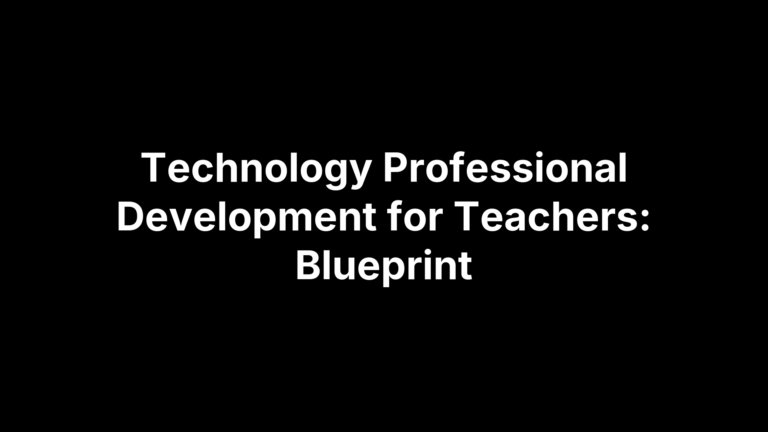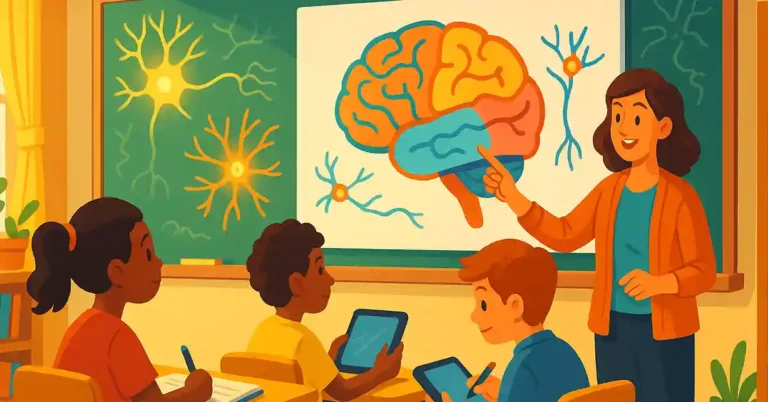20 Best Educational Software for Teachers in 2025
The top picks for 2025 blend AI-powered efficiency, student engagement, and seamless integration with existing classroom workflows. Teachers asked for tools that cut paperwork, personalize learning, and play nicely with Chromebooks and tablets; after testing dozens of platforms, we narrowed the field to the 20 that consistently check those boxes.
Each tool on this list earned its spot by demonstrating measurable gains in learning outcomes, an interface you can master before the next bell rings, fair pricing—or a genuinely useful free tier—robust data-privacy policies, and forward-looking features such as generative-AI lesson builders or adaptive practice. Each was reviewed by practicing educators across multiple grade levels and content areas to ensure every recommendation works under real classroom pressures. You’ll find a mix of free and paid options covering lesson delivery, formative assessment, differentiation, communication, and plain old time-saving automation, so you can cherry-pick the software that solves your biggest classroom headache without blowing the budget.
Below you’ll find a deep dive into each tool—what it does, why teachers love it, and how to get started quickly. Let’s jump in and turn that tech wishlist into a streamlined, student-centered reality.
1. The Cautiously Optimistic Teacher
More than a blog, The Cautiously Optimistic Teacher doubles as a Swiss-army platform that wraps lesson resources and classroom-ready AI under one login. If you want differentiation, grading comments, and unit plans handled before lunch duty, start here.
Key Features at a Glance
- AI toolkit: Differentiated Instruction Helper, Worksheet Maker, Question Generator, and the ever-popular Report Card Commentor—now with smarter 2025 prompts that auto-pull state standards.
- Curated content library featuring full unit plans for To Kill a Mockingbird, Greek Mythology, Lord of the Flies, and more, each mapped to common core and UDL guidelines.
- Growth-mindset materials like the Brain Builders Workshop to kick-start SEL without hunting down separate sites.
- New for 2025: one-click push to Google Classroom, expanded template gallery, and AI-generated rubrics that scale to any grade level.
Classroom Impact & Best Uses
Leverage the AI helpers to:
- Auto-differentiate readings or questions at multiple Lexile bands—instant accessibility for ELL and SPED students.
- Knock out narrative and standards-aligned report-card comments in seconds, freeing evenings for actual feedback.
- Drop pre-built discussion prompts and formative quizzes into lessons to spark higher-order thinking without extra prep.
Pricing, Platform Support, and Onboarding Tips
Freemium gets you a healthy monthly allotment of AI credits; premium unlocks unlimited generations plus the full unit-plan vault at a teacher-friendly price. The service lives entirely in your browser and is optimized for Chromebooks, iPads, and desktops—no installs, no IT tickets. Sign-up takes five minutes, and bite-sized tutorial videos walk you through your first differentiated worksheet. Pro tip: subscribe to the optional weekly newsletter for a steady drip of PD and template drops.
2. Google Classroom
Google Classroom remains the de facto digital hub for millions of K–12 educators—and for good reason. The lightweight learning-management system (LMS) sits at the center of the Google Workspace ecosystem, so it feels familiar the moment you log in. If you’re hunting for the best educational software for teachers that handles the day-to-day mechanics of class with very little fuss, Classroom is still tough to beat.
Key Features at a Glance
- Paperless workflow for posting assignments, collecting work, and returning graded files in a couple of clicks
- Built-in originality reports and customizable rubrics for consistent, transparent feedback
- Real-time comment streams that keep instructions, resources, and clarifications organized by topic
- One-tap integration with Docs, Slides, Sheets, Forms, Drive, and Meet—no file-juggling required
- Add-ons marketplace (Kami, Pear Deck, Edpuzzle, etc.) that embeds third-party tools directly inside assignments
- Guardian email summaries that auto-send missing-work alerts and upcoming deadlines
Classroom Impact & Best Uses
Instant distribution and auto-saving mean students never “lose” a copy, while teachers gain a living record of revisions and comments.
- Speedy formative checks: attach a Google Form quiz and toggle on auto-grading
- Collaborative projects: assign group Slides with version history for accountability
- Remote or blended learning: schedule Meet links and materials in the same stream
Pricing, Platform Support, and Onboarding Tips
- Completely free for schools; upgrading to Workspace for Education Plus unlocks advanced analytics and security controls
- Works on any device with a modern browser or the iOS/Android app—perfect for 1:1 Chromebook programs
- Onboard in under an hour: import rosters from your SIS, enable chosen add-ons, and model the “Turn in” workflow during the first week to sidestep confusion later
3. Canva for Education
If you’ve ever wished your students’ slide decks looked less like ransom notes and more like TED-Talk material, Canva for Education is your new best friend. The design platform removes the intimidation factor from visual creation, giving teachers and kids a polished result without spending an entire period teaching graphic design.
Key Features at a Glance
- Drag-and-drop editor packed with royalty-free photos, GIFs, icons, and fonts
- “Magic Design” AI that turns a prompt or rough outline into a finished slide deck or poster in seconds
- Thousands of curriculum-aligned templates for infographics, lab reports, newsletters, and certificates
- Real-time collaboration and commenting—think Google Docs but for visuals
- 2025 upgrades: text-to-graphic generative AI, auto-subtitle video tool, and direct export to Google Classroom or Microsoft Teams
Classroom Impact & Best Uses
- Student choice projects: timelines, comic strips, TikTok-style videos—same rubric, different mediums
- Anchor charts and classroom décor that actually match your color palette
- Multimedia accommodations: audio narration and captions support diverse learners and UDL goals
- Peer feedback cycles: groups iterate on designs while you monitor revision history for effort grades
Pricing, Platform Support, and Onboarding Tips
- 100 % free for verified K–12 educators and their students—no watermarks, no upsells
- Accessible via any browser plus iOS, Android, Windows, and macOS apps; offline editing in the desktop version
- Quick start: sign up with your school Google account, create a “Classroom Brand Kit” for consistent fonts/colors, then share design links as templates so each student gets their own editable copy
4. Nearpod
Nearpod turns the humble slide deck into an interactive lesson hub where every student has a voice—and the data to prove it. Whether you’re teaching in person, hybrid, or entirely online, the platform lets you weave polls, quizzes, VR field trips, and “Draw-It” whiteboards directly into your presentation so engagement never drops when the lights go off. That versatility makes Nearpod a perennial entry on any list of the best educational software for teachers who need real-time insight without juggling half a dozen apps.
Key Features at a Glance
- Interactive slides and videos with embedded polls, quizzes, open-ended prompts, and matching pairs
- 360° VR experiences and 3D objects for instant “wow” without expensive headsets
- Live participation or student-paced mode, each with automatic progress tracking
- Drag-and-drop activity builder plus a massive lesson library searchable by standard and grade
- 2025 update: AI lesson optimizer that suggests engagement checks based on past student responses
Classroom Impact & Best Uses
- Formative assessment on steroids—responses populate teacher dashboards in seconds, spotlighting misconceptions before they harden
- Seamless differentiation: switch a whole-class session to student-paced for learners who need more think time
- Virtual field trips to historic sites or inside a cell keep science and social studies vivid without permission slips
- Draw-It activities double as digital exit tickets or quick SEL check-ins
Pricing, Platform Support, and Onboarding Tips
- Freemium plan supports 40 participants; Gold (up to 75) and Platinum (unlimited) unlock advanced reports and sub-plans
- 100 % web-based with iOS, Android, and Windows apps—runs smoothly on Chromebooks and interactive panels
- Quick start: import an existing Google Slide deck, sprinkle in two polls and a quiz, then launch with the five-character code; use the post-session report to group students for next-day reteach
5. Kahoot!
Mention “game-based learning” in a teacher lounge and someone will inevitably blurt out “Kahoot!” The quiz platform remains a crowd-pleaser in 2025 because it turns formative assessment into a stadium-style event—yet it now scales just as well for quiet, self-paced study. The new “Courses” feature lets educators chain multiple kahoots, videos, and discussion prompts into a mini-unit, making the app more than a one-off review tool and cementing its place among the best educational software for teachers who want data with their dopamine.
Key Features at a Glance
- Live quiz battles, team mode, and asynchronous “Homework” challenges
- Puzzle and slider question types for deeper conceptual checks
- 2025 Courses: bundle kahoots, media, and reflections into a sequenced playlist
- AI question generator that writes distractors tied to learning objectives
- Detailed post-game reports with class averages, individual accuracy, and export to Sheets
Classroom Impact & Best Uses
- Energize unit reviews—music countdowns and leaderboards spike motivation without extra prep
- Flip the classroom: assign a Course as homework, then open class with targeted reteach based on analytics
- SEL tie-ins: cooperative “Team Mode” encourages communication and shared strategy
- Low-stakes diagnostics on the first day of a unit uncover prior knowledge fast
Pricing, Platform Support, and Onboarding Tips
- Free basic plan; Edu Pro tiers add advanced reports, Courses creation, and up to 2,000 participants
- Works on any web-enabled device, including smartphones; no account required for students
- Pro tip: randomize answer order in settings to reduce screen-peeking, and duplicate popular kahoots from the public library instead of starting from scratch
6. Edpuzzle
Video is catnip for students, but passive watching rarely moves the achievement needle. Edpuzzle fixes that by transforming any YouTube, Vimeo, or self-recorded clip into an interactive lesson complete with checks for understanding and detailed analytics—no advanced editing skills required.
Key Features at a Glance
- Embed multiple-choice, open-ended, or “pause and reflect” prompts directly in the video timeline
- Add voice-overs or notes to contextualize content and scaffold key moments
- Prevent skipping with “watch-mode” controls and track exact watch time per student
- Live Mode projects the video to the whole class while collecting answers on each device in real time
- 2025 upgrade: AI Question Generator that writes standards-aligned prompts from any timestamp
Classroom Impact & Best Uses
- Flip your lectures: assign an Edpuzzle for homework, then use the in-dashboard heat map to reteach missed concepts the next day
- Accountability for third-party content: verify students actually watched that NASA clip, not just “skimmed” it
- Formative assessment: instant grade pass-back to Google Classroom, Canvas, or Schoology keeps your gradebook current without manual entry
- Accessibility: closed captions and adjustable playback speed support diverse learners
Pricing, Platform Support, and Onboarding Tips
- Free tier includes unlimited assignments but caps video storage; Pro School plans lift limits and add district analytics
- Works in any modern browser plus iOS/Android apps; Chrome extension imports web videos in one click
- Onboard fast: search the public library for ready-made lessons, copy one, and assign—students join with a class code and you’re collecting data before the bell
7. Flip
Flip (the re-branded Flipgrid from Microsoft) takes the awkward silences out of class discussion by letting students record short videos on their own time and respond to peers in a threaded feed. Because the camera feels more like TikTok than a pop quiz, even your quietest learners usually hit record. Teachers praise Flip as one of the best educational software options for nurturing speaking and listening skills without eating up synchronous minutes.
Key Features at a Glance
- Simple, browser-based video recorder with emoji, stickers, and backdrops
- Threaded replies that build true dialogue instead of one-off posts
- Automatic captioning and Immersive Reader for accessibility and ELL support
- Screen-share and whiteboard overlays for demonstrations or problem solving
- 2025 add-ons: background noise reduction and QR codes for instant mobile access
Classroom Impact & Best Uses
- Oral language assessments in world-language or ELA classes
- Book talks, science reflections, and “elevator-pitch” project summaries
- Global collaborations via public “Groups” that safely connect classrooms worldwide
- SEL check-ins: private “Dear Teacher” prompts students answer when words are hard
Pricing, Platform Support, and Onboarding Tips
Flip is 100 % free—no premium tiers hiding the good stuff. It runs in any modern browser plus iOS and Android apps; students sign in with Microsoft, Google, or a join code. Create your first Topic, set a 90-second limit to keep editing time sane, and share the link in Google Classroom. Expect near-instant participation once the first brave soul posts.
8. Diffit
Differentiation usually eats planning periods alive; Diffit hands that time back by auto-generating leveled readings, questions, and vocabulary lists from any article, PDF, or YouTube transcript. Feed the AI a topic or paste a URL and it spits out versions spanning elementary to high-school Lexiles—complete with standards tags—so every student enters the same conversation at the right cognitive load. For teachers looking to pair accessibility with efficiency, Diffit quietly ranks among the best educational software for teachers you’ve probably never tried.
Key Features at a Glance
- One-click text leveling: generates multiple Lexile bands plus audio narration files.
- Question builder: MCQs, short answer, and higher-order prompts aligned to Bloom’s and your state standards.
- Vocabulary toolkit: auto-pulls tier-two and content terms with kid-friendly definitions and Cloze practice.
- Export options: push to Google Classroom, download as Docs, or copy HTML for LMS pages.
- Chrome extension: highlight any online text, then summon leveled versions without leaving the tab.
Classroom Impact & Best Uses
- Instant accessibility for ELL, SPED, and mixed-ability groups.
- Pre-teach vocab before a novel study, or create tiered exit tickets in seconds.
- Pair with Nearpod or Edpuzzle to layer comprehension checks onto differentiated texts.
Pricing, Platform Support, and Onboarding Tips
- Freemium web app; paid plans lift daily generation limits and add school-wide analytics.
- Works in any browser and as a Chrome extension—no installs for students.
- Start by leveling tomorrow’s article, compare readability scores, then share all versions so students self-select the right fit.
9. Quizizz
Quizizz keeps the competitive spirit alive without turning assessment into a stress fest. The platform blends Kahoot-style excitement with self-paced practice and adaptive question banks, so every learner moves at a comfortable speed while you harvest real-time mastery data.
Key Features at a Glance
- Live and homework modes with thousands of teacher-made quizzes searchable by standard and topic
- Adaptive Practice sets that automatically re-serve missed concepts until mastery is shown
- Meme and GIF feedback plus music controls for instant, low-stakes motivation
- Detailed class and student reports, including question-level heat maps and growth trends
- Offline mode in the mobile app—students can finish assignments even when Wi-Fi is flaky
- 2025 upgrade: AI Distractor Builder that crafts plausible wrong answers aligned to misconceptions
Classroom Impact & Best Uses
- Launch a live quiz to preview a unit, then assign the same set for homework to reinforce gaps
- Use Adaptive Practice as bell-ringers; data dashboard flags who needs a quick mini-lesson
- Host weekly “Quizizz Cups” where teams draft their own questions—peer teaching plus bragging rights
Pricing, Platform Support, and Onboarding Tips
- Robust free tier; School/District plans unlock LMS sync, unlimited classes, and advanced analytics
- Works in any browser, iOS, and Android; offline progress syncs once devices reconnect
- Quick start: import a CSV roster, copy an existing quiz, toggle on Adaptive Practice, and share the join code—students are playing (and learning) in under five minutes.
10. Mentimeter
When your lesson needs quick feedback from thirty squirrely sixth-graders or two hundred biology majors, Mentimeter’s real-time polls and word clouds deliver instant clarity. The tool slots neatly into slide decks you already use, making it one of the best educational software for teachers who juggle large groups and crave actionable data without derailing flow.
Key Features at a Glance
- Live polls, multiple-choice quizzes, word clouds, and ranking activities
- Anonymous Q&A mode that surfaces silent students’ questions
- AI Slide Generator (2025) proposes poll types based on your slide text
- Seamless add-ins for PowerPoint, Google Slides, and Keynote
- Exportable results as CSV or presentation-ready charts
Classroom Impact & Best Uses
- Real-time comprehension checks during lectures—spot misconceptions before they snowball
- Exit tickets: one word cloud summarizing the “muddiest point” guides tomorrow’s reteach
- Anonymous SEL temperature checks build psychological safety in homeroom
- Debate prep: ranking prompts let students prioritize arguments and justify choices
Pricing, Platform Support, and Onboarding Tips
The free plan allows two question slides per presentation, perfect for quick pulses. Edu Pro (paid) unlocks unlimited questions, slide branding, and LMS integrations. Mentimeter is 100 % web-based, runs on any device, and embeds in PowerPoint with a single add-in. Kick off a trial by converting one existing slide deck—students join via QR code or six-digit pin, no sign-ups needed.
11. Seesaw
Think of Seesaw as a living, multimedia portfolio that follows students from kindergarten finger-painting to middle-school lab reports. Teachers use it to capture learning artifacts in any format—photos, recordings, annotations—and families view progress in real time, making it a perennial pick among the best educational software for teachers who value transparency and student voice.
Key Features at a Glance
- Tap-to-add assignments with drawing, video, annotation, and voice tools
- Auto-generated skill tracking and standards tagging for each post
- Two-way family messaging with translation into 100+ languages
- Activity library stocked with 160,000+ teacher-created tasks, searchable by grade and subject
- 2025 update: AI captioning for student recordings and analytics dashboards that spotlight growth areas
Classroom Impact & Best Uses
- Build evidence portfolios for conferences without bulky binders
- Enable choice boards so learners pick the medium—diagram, podcast, or selfie explanation—that best shows mastery
- Foster metacognition: students reflect on their work via voice comments, creating an ongoing narrative of improvement
Pricing, Platform Support, and Onboarding Tips
Seesaw’s core version is free; Seesaw for Schools unlocks school-wide analytics, SIS sync, and data exports. The web app runs smoothly on Chromebooks, iPads, and smartphones. Onboard by modeling one “All About Me” post, then let students explore the tools; tag each submission to standards early so reports are meaningful at grading time.
12. Text Blaze
If you spend more time typing the same feedback phrases than actually thinking about student growth, Text Blaze is your escape hatch. The Chrome-based snippet tool lets teachers summon entire paragraphs, rubrics, or IEP boilerplate with a short keyboard shortcut, cutting repetitive typing by up to 70 percent and freeing brain space for the stuff only humans can do.
Key Features at a Glance
- Custom snippets triggered by shortcuts like
/hwlate, expanded instantly wherever you type - Dynamic placeholders (e.g.,
{form:name}) that pull student names, dates, or grades on the fly - Conditional logic and math formulas—perfect for auto-calculated late-work penalties (
{=score*0.9}) - Shared snippet folders so grade-level teams keep language consistent
- Cloud sync across devices and built-in analytics showing keystrokes saved
Classroom Impact & Best Uses
- Paste detailed rubric rows into Google Classroom comments in seconds
- Generate differentiated praise statements without sounding like a robot
- Speed-write parent emails, behavior logs, and meeting agendas
- Streamline IEP documentation by merging student data into pre-approved templates
Pricing, Platform Support, and Onboarding Tips
- Free Starter plan covers 20 snippets; Pro unlocks unlimited snippets, advanced formulas, and priority support
- Chrome extension only, but snippets work in any web app—Docs, Classroom, Canvas, you name it
- Onboard in ten minutes: install, create three high-frequency feedback snippets, and watch your keyboard workload evaporate
13. Kira Learning
Coding and AI literacy are no longer electives—they’re table stakes. Kira Learning gives teachers a turnkey pathway into Python, data science, and machine learning without forcing them to moonlight as software engineers. The browser-based IDE, scaffolded lessons, and automatic grading let you focus on mentoring problem-solvers instead of debugging syntax.
Key Features at a Glance
- Full coding curriculum from basic Python to neural-net projects, mapped to CSTA standards
- Auto-graded exercises with instant feedback and rich error hints so students iterate independently
- Adaptive difficulty engine that unlocks tougher challenges when mastery is proved and offers targeted hints when it’s not
- Real-time teacher dashboard that surfaces stuck students, common misconceptions, and class-level progress trends
- One-click LMS integrations (Canvas, Schoology, Google Classroom) with grade pass-back and Single Sign-On
Classroom Impact & Best Uses
- Launch a semester-long CS elective or embed short AI modules in math and science units
- Use the adaptive tracks for true differentiation—advanced coders dive into APIs while beginners get extra scaffolded drills
- Project gallery (chatbots, data visualizations, mini-recommendation systems) turns abstract algorithms into portfolio pieces for college apps
- Formative data arms teachers with actionable next steps even if they’re learning Python alongside their students
Pricing, Platform Support, and Onboarding Tips
Kira runs a freemium model: core lessons and IDE access are free; premium unlocks advanced AI units, analytics exports, and co-teaching seats. Entirely web-based, it works on Chromebooks, iPads (via browser), and desktop OSes—nothing to install. Import your roster, assign the “Python Warm-Up,” and students are coding within five minutes. Tip: preview the auto-grade rubric so you can explain how partial credit is awarded before the first submission.
14. Blooket
Think “Jeopardy!” meets Mario Kart. Blooket wraps ordinary quiz questions in frenetic, arcade-style mini-games that students beg to play after the bell. Because the content is teacher-created, you control the rigor while the platform supplies the music, avatars, and power-ups that turn a vocab review into a Friday-level celebration. Its low prep time and sky-high engagement cement Blooket’s spot on any list of the best educational software for teachers who want data without dullness.
Key Features at a Glance
- 12+ game modes—Tower Defense, Crypto Hack, and new 2025 “Fishtank Frenzy.”
- One-click import from Quizlet or CSV; AI Distractor Builder crafts plausible wrong answers.
- In-game currency and collectible “Blooks” drive replay value and friendly competition.
- Live or Homework mode with auto-generated reports on accuracy and speed.
- Public Set Library lets teachers remix 10 million+ question banks.
Classroom Impact & Best Uses
- High-energy review sessions before unit tests or state assessments.
- After-school clubs or rainy-day brain breaks that still reinforce content.
- Team modes foster collaboration and sportsmanship alongside academics.
- Quick diagnostics: early-unit Blooket flags misconceptions in minutes.
Pricing, Platform Support, and Onboarding Tips
Core Blooket is free; Plus unlocks detailed analytics, student progression tracking, and seasonal game modes at a modest yearly fee. Entirely browser-based—works on Chromebooks, tablets, and phones with no downloads. Create a set, choose a mode, project the join code, and watch participation hit 100 percent before you finish attendance.
15. Gimkit
Need an upgrade from multiple-choice monotony? Gimkit turns quizzes into student-run game shows where right answers earn cash and wrong ones cost you, blending content review with budgeting strategy and securing its place among the best educational software for teachers who thrive on competition.
Key Features at a Glance
- Students build question banks or remix public Kits; optional AI suggests distractors.
- Live, Team, and Homework modes pay virtual dollars you spend on power-ups or auto-assign for absent students.
- Rotating seasonal games (Snowbrawl, Tag Domination, 2025’s Escape) keep novelty high.
Classroom Impact & Best Uses
- Peer-authored questions deepen analysis skills and reveal misconceptions earlier.
- Virtual economy sparks math conversations on risk, interest, and profit, aligning neatly with econ standards.
- Homework Kits provide self-paced review with auto-scored data for reteaching.
Pricing, Platform Support, and Onboarding Tips
- Free Basic: 5 Kits, core modes; Pro ($9/mo) unlocks unlimited Kits and scheduled assignments.
- 100 % browser-based; runs smoothly on phones, tablets, and Chromebooks.
- Import a Quizlet set, click “Assign” to schedule asynchronous play before the quiz.
Expect pin-drop focus once the first cash bonus flashes on screen.
16. ClassDojo
ClassDojo has long been the go-to app for cultivating positive classroom culture, and its 2025 refresh layers in AI-powered insights without losing the friendly monsters kids already adore. If you want a streamlined way to reinforce expectations, document SEL growth, and keep families in the loop—all from your phone—ClassDojo still punches above its weight.
Key Features at a Glance
- Customizable point system for behaviors, skills, and SEL competencies
- Instant parent messaging with automatic translation in 30+ languages
- Student portfolios for photos, videos, voice notes, and annotated work samples
- Class Story and School Story feeds for announcements and celebrations
- Toolkit of teacher utilities: random name picker, noise meter, timer, and group maker
- New for 2025: mood check-in slider and AI sentiment analysis that flags patterns needing intervention
Classroom Impact & Best Uses
- Real-time positive reinforcement boosts engagement and reduces off-task chatter
- Transparent data logs support restorative conversations and IEP meetings
- Portfolios showcase growth across subjects, giving shy students a voice through images and recordings
- Stories turn parent communication into a social feed, increasing family involvement even when schedules clash
Pricing, Platform Support, and Onboarding Tips
Free for individual teachers; optional Families+ subscription adds home-based activities but remains parent-paid, not teacher-funded. The app runs on any browser plus iOS and Android, syncing instantly across devices. Set clear point criteria on day one, project the monster avatars to model expectations, and schedule weekly auto-generated reports so families celebrate wins—not just infractions.
17. Kami
Paper packets are so 2015. Kami turns any static PDF, image, or slide deck into an interactive canvas where students can type, draw, annotate, or even record video reflections—all in real time. Whether you’re teaching close reading, modeling math solutions, or distributing accommodations, the tool replaces the copier with clicks and keeps every artifact neatly synced in the cloud. It’s a quiet powerhouse among the best educational software for teachers who want full-featured markup without buying a fleet of iPads.
Key Features at a Glance
- Layered annotation: free-hand ink, text boxes, shapes, highlighters, and math equation tools
- Multimedia feedback: voice, video, and screen-capture comments for richer guidance
- Live collaboration: multiple users annotate simultaneously with color-coded cursors
- Accessibility toolkit: OCR, read-aloud, auto-dictionary, and dyslexia-friendly fonts
- Seamless integrations: Chrome extension embeds directly in Google Drive, Classroom, Canvas, and Schoology
- 2025 update: AI Summary Notes that generate concise key-point outlines from long PDFs
Classroom Impact & Best Uses
- Collaborative close reading where students annotate side-by-side and react to peers’ notes
- Paperless worksheets that auto-grade multiple-choice and export scores to Classroom
- Differentiated scaffolds: hide or reveal layers, insert audio prompts, or enlarge text for specific learners
- Video comment threads allow remote students to join text discussions asynchronously
Pricing, Platform Support, and Onboarding Tips
Kami’s freemium tier covers basic markup for unlimited documents; EDU licenses unlock equation editor, split-screen compare, and LMS grade pass-back. Runs in any browser plus iOS and Android apps, with offline mode syncing once devices reconnect. Install the Chrome extension, open a PDF from Drive, and assign through Google Classroom—students join with a click, no separate logins. Pro tip: create template layers so each new class starts with pre-tagged discussion questions.
18. GradeCam
Waiting days for the Scantron machine to cough up scores is officially passé. GradeCam turns any webcam, document camera, or smartphone into a high-speed scanner that grades bubble sheets and rubrics the moment students hit “submit.” Because results post instantly to your dashboard—and can sync to most SIS or LMS platforms—it’s become a sleeper favorite among teachers hunting for the best educational software for rapid, standards-aligned feedback.
Key Features at a Glance
- Camera-based scanning for multiple-choice, numeric, rubric, and handwritten responses
- Auto-tag standards so every question rolls into skill-level analytics without extra clicks
- Item analysis, heat maps, and mastery reports exportable to CSV or directly to Google Classroom
- Flexible form creator: print on plain paper, adjust bubble size, or embed constructed-response boxes
- Secure cloud storage with FERPA-compliant encryption
Classroom Impact & Best Uses
Real-time scoring lets you reteach missed objectives the same period, not next week.
- Quick checks: 5-question exit tickets scanned in under a minute
- Common assessments: district teams compare data without manual aggregation
- Performance tasks: attach rubric labels for fast, consistent grading
Pricing, Platform Support, and Onboarding Tips
- Free Lite plan (10 questions per assignment); Go and School tiers lift limits and add LMS/SIS sync
- Web-based plus iOS/Android apps—no proprietary hardware needed
- Onboard by printing practice sheets and teaching students proper bubbling; flawless scans start on day one
19. iSpring Free Teaching Tools
Need rapid-fire authoring without a steep learning curve? iSpring’s free toolkit lets Windows users spin up interactive quizzes, screencasts, and eLearning modules straight from good old PowerPoint—no subscription, no watermark required. It’s a bite-size sampler of the larger iSpring Suite, yet it packs enough muscle to satisfy most flipped-classroom and LMS demands. For educators looking to package lessons in SCORM or video form without pleading for IT support, this download is a no-brainer—and a sleeper pick among the best educational software for teachers in 2025.
Key Features at a Glance
- QuizMaker: build graded or survey quizzes with 14 question types, feedback slides, and question randomization
- Screen Recorder: capture lecture demos, voice-over slides, or webcam picture-in-picture at 60 fps
- PowerPoint-to-SCORM Converter: publish existing decks as LMS-ready courses that track completion and scores
- Built-in characters, slide templates, and design presets keep visuals consistent across lessons
Classroom Impact & Best Uses
- Package a full PowerPoint unit into a SCORM file so Canvas, Schoology, or Moodle logs student progress automatically
- Record micro-lectures for flipped learning; dashboard analytics reveal who actually watched before class
- Embed low-stakes quizzes between slide sections to reinforce retrieval practice without juggling multiple apps
Pricing, Platform Support, and Onboarding Tips
- Totally free forever; optional upgrade to iSpring Suite adds dialogue simulations and branching scenarios
- Runs on Windows 10/11; publish to a cloud dashboard accessible from any browser for easy sharing
- Quick start: import your next lesson deck, click “Publish to LMS,” and upload the generated ZIP—five clicks, zero headaches
20. Schoology Learning
Schoology Learning (now part of the PowerSchool ecosystem) earns its keep in 2025 by pairing classroom-level flexibility with district-scale oversight. Teachers get a familiar social-media style feed for materials and discussions, while administrators tap enterprise analytics that surface standards mastery in real time. The newest release adds AI-generated lesson outlines and tighter SIS syncing, making it a cornerstone for schools that want one platform to unify grades, content, and communication.
Key Features at a Glance
- All-in-one course hub: resources, assignments, quizzes, discussions, and a mastery-aligned gradebook
- Advanced assessment engine with item banks, question randomization, partial-credit rubrics, and secure browser options
- Analytics dashboards that flag at-risk students and track growth by standard, class, or building
- AI Lesson Assist (2025) drafts objectives, activities, and accommodations from district curriculum maps
- Parent portal with push notifications for grades, missing work, and school announcements
- Deep integrations: SIS sync, Google Drive, Microsoft 365, Nearpod, Kami, and 200+ LTI tools
Classroom Impact & Best Uses
Schoology shines when you need consistency across multiple courses or campuses. Teachers clone district-approved templates, embed formative checks, and differentiate due dates, while PLCs use common assessment data to plan reteach cycles. For students, a single feed per course minimizes “Where do I click?” confusion, and guardians appreciate real-time grade alerts that prompt timely interventions.
Pricing, Platform Support, and Onboarding Tips
- District-level licensing billed per student; includes unlimited courses, enterprise analytics, and dedicated support
- 100 % browser-based with full-featured iOS and Android apps; optimized for Chromebooks, tablets, and desktops
- Rollout advice: start with a pilot grade level, lean on the built-in PD courses, and map SIS fields before import. Most districts reach go-live in six weeks when data sync and role-based permissions are planned early.
Final Thoughts on Choosing the Right Software
Sorting through dozens of apps is easier when you start with the problem that steals the most instructional minutes. Need instant engagement? Gamified quizzers like Kahoot! or Blooket earn cheers. Struggling with differentiation? Diffit and The Cautiously Optimistic Teacher’s AI helpers level content on the fly. Buried under grading? GradeCam and Text Blaze shave hours off feedback cycles.
Once you’ve matched a tool’s super-power to your pain point, run a short pilot with one class, gather student and family feedback, and study the analytics before rolling it out district-wide. Most vendors offer free trials or generous basic plans, so experimentation costs nothing but curiosity.
Remember, the best educational software for teachers is the one that quietly removes friction without adding new headaches. Ready to test-drive AI in your own classroom? Grab our free toolkit at The Cautiously Optimistic Teacher.







